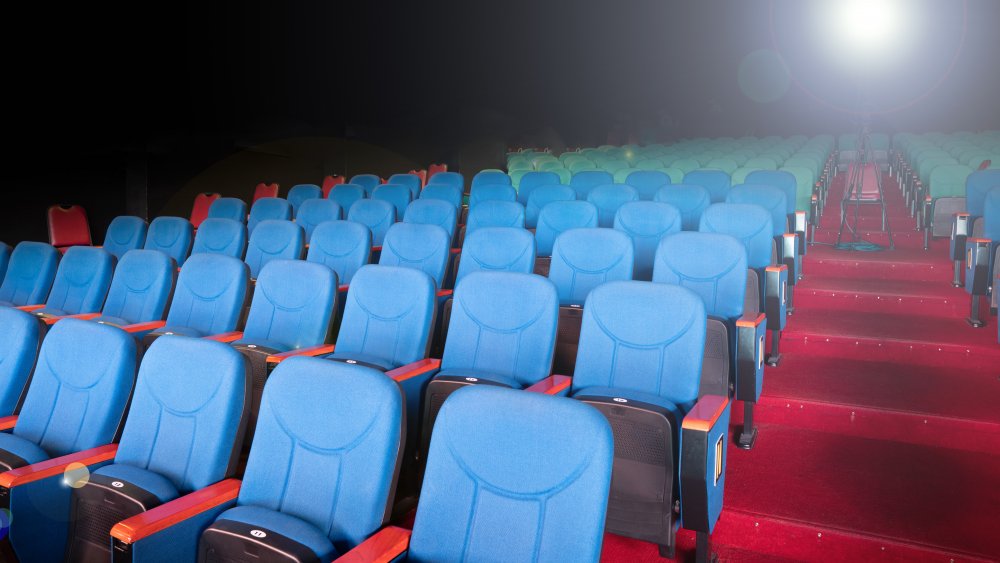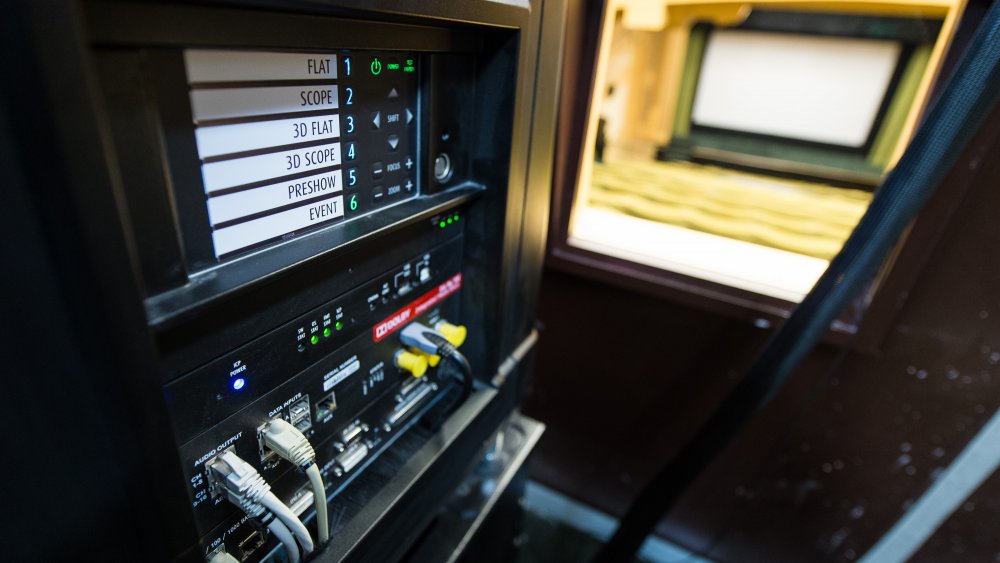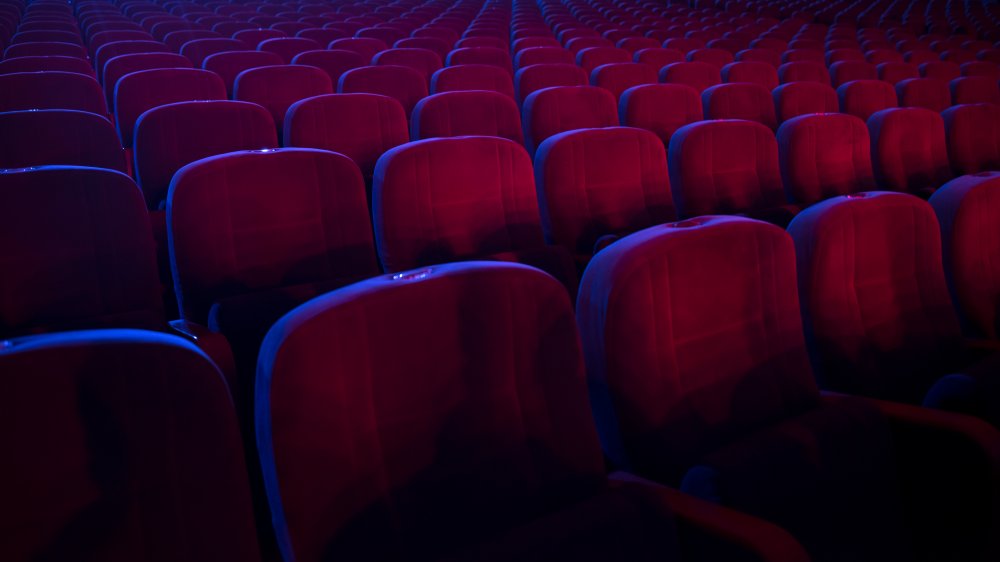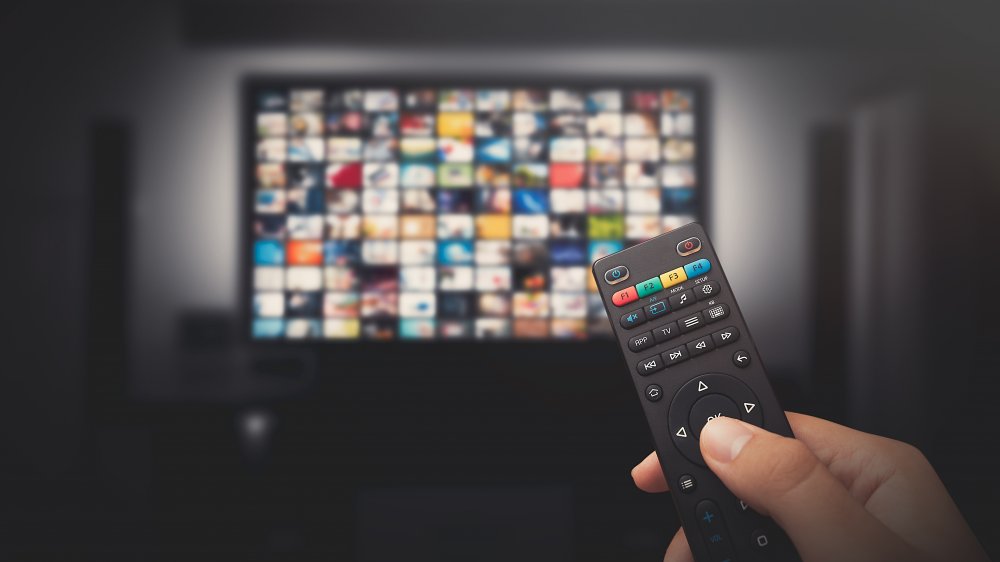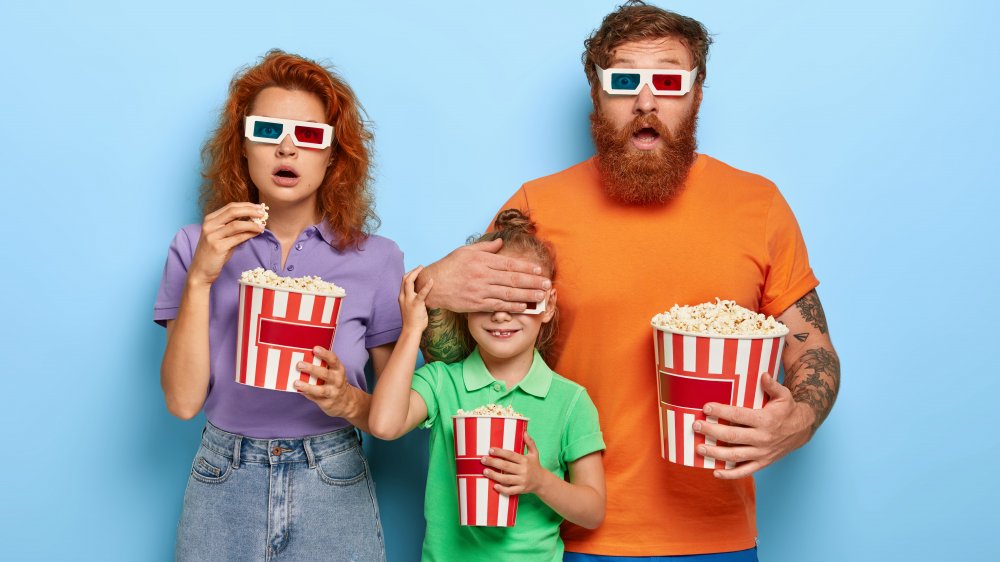Why Are Movie Tickets So Expensive?
It's become a familiar refrain in the past 20 or so years that catching a movie is a lavishly expensive foray for families. As of July 2019, the average movie ticket cost sits at $9.26, meaning your typical American family of four pays just over $37 just to walk in the door — before any of those eternally-pricey concessions enter the mix. Of course, tickets can get up to $20 a pop, depending on the location of the theater (cinemas in larger cities tend to be pricier) and type of film being shown (e.g., IMAX, 3D, or standard).
It's a known and easily observable fact that movie tickets are expensive, but it's less obvious as to why that is. Who's to blame for the steep cost? Well, it's not as easy as pointing fingers at corporate theater conglomerates lusting after high profit margin. The film industry is a complex beast that grows more expensive every year as blockbusters demand more cash to get made, and that can in many ways filter back down to the everyday consumer. Plus, the entire economy of mass entertainment is undergoing its own radical transformation.
Here are some of the primary reasons why hitting up your local screen seems more and more spendy today — and why that doesn't necessarily mean the death knell for a night at the movies some think it may be.
The movie theater revenue format
One of the best-kept secrets in the film industry is how movie theaters get paid for screenings. It doesn't matter if you're Regal Cinemas, one of the biggest theater chains in the U.S., or the mom-and-pop indie theater — the format is the same, and each struggle with it in their own ways. Distribution studios send films to theaters on a release date and the theater, of course, screens them — but the trick is in who gets how much out of each movie ticket, and when. On release week, the distribution studio will receive about 90 percent of that money, and the rest goes to the theater. Over subsequent weeks, that proportion shifts in favor of the theater: 80/20 for week 2, 70/30 for week 3, and so on. This is why movies that do well can stay so long at a theater, and why flops disappear so fast from circulation: the theater literally cannot afford to keep box office bombs running, even if it means screening an older movie on another screen instead. It's a surer thing, financially. But the best returns are always in that first week, benefitting studios far over theaters.
You may have already guessed this, but this payment format is also why concessions are well above the usual retail price. Concessions are the biggest consistent revenue stream for a theater since the fickleness of box office profits can't sustain it alone. If your local theater seems aggressive about preventing people from sneaking stuff in, now you understand a bit better why that is.
The switch to digital projection contributed to increased ticket prices
In much the same way the revenue stream of movies favors studios, so too did the battle over the transition from film to digital projection at theaters. We take it for granted now, but when the discussion first began to turn over theaters to digital in 2000, nobody knew who was going to pay for it. Though digital filming began in 1996 on an independent level, the conversation didn't truly pick up until the release of Star Wars: Attack of the Clones in 2002, what with it being the highest-profile film to date shot entirely in high definition. This argument stayed largely at the industry level for years from there; studios were eager to turn over to digital as soon as possible because it drastically lowered their distribution costs (putting a jump-drive in the mail is far cheaper than reels of fragile film). Theaters were less eager — audiences certainly preferred the clarity and replay stability of digital projection, but the digital equipment and the resultant turnover cost was multitudes more expensive than reel projectors. Additionally, since reel projectors are mechanical and thus more easily repairable, they can be maintained over a much longer term than digital ones. Theaters knew perfectly well that although audiences may prefer digital projection, it wouldn't drive them into theaters in measurable enough droves to recoup the cost of upgrading all on its own.
This back-and-forth went on for a number of years until specialized financing executives developed a unique kind of fee for studios to help theaters earn back costs — though they still had to pay a portion of that extremely expensive upgrade that they'd need to pay back loans on. Some independent theaters just didn't survive after the transition, because you can only raise ticket prices so much and still have people want to go to the movies.
General decline of theater patronage
Another big reason for the growing expense of theater patronage is a classic supply-and-demand spiral: fewer people are going to the movies, so prices must rise because costs don't change.
The past 10 years have been a slow but steady decline for moviegoing, though that might sound odd given how each new Marvel Cinematic Universe installment seems to shatter one or more box office records. Why don't people go to the movies way they used to? Yes, Netflix offers the ability to re-watch favorites without taking an expensive chance on a non-guarantee at the box office, and that's certainly part of the equation, but it also has to be noted that we just don't have to wait like we used to for home distribution of new movies anymore, either. Remember when it used to be six-to-eight months before a DVD release? How did we live? Generational media consumption tastes have changed, and now, we can purchase a digital license for home viewing in mere weeks after initial release, streaming be damned. As physical media wanes and digital storage waxes, high-definition movie watching can go anywhere, any time.
On top of that, the disparity in technology between the theater and home viewing has narrowed, too. 4K televisions and affordable multichannel, single-unit sound bars have brought most of the benefits of theater patronage home without the hell of other people, to quote a touch of Sartre. In short: it's simply not necessary to go to the theater like it was up until about 2010. Save for some exceptions (we'll get to that in a minute), a lot of people just don't go to the movies anymore.
The rise of television and the overlapping between mediums
Pursuant to declining theater patronage and the resultant increase in ticket prices is television being ascendant in the new media landscape. People still love and watch movies, but it's safe to say this is the first time in the history of mass media that television truly contests film in both comparative production quality and demand for eyeballs. As prestige television on streaming and paid cable alike continue spending near-cinematic amounts of money and blurring the line in production value, it seems the only distinguishing quality between television and film in the future will be run time and amount of iterative episodes in any given series. Television is an inherently more flexible medium that can adjust itself mid-consumption, as opposed to the single opportunity film presents. People will give more chances to television before walking away from it; with film, it becomes a question of simply choosing not to see a single movie at all if it isn't a good enough guarantee.
Prestige television's reach only continues to widen as networks decline and paid subscription, with its lesser content restrictions, grows bolder in what stories it chooses to tell and how it's done. Meanwhile, film seems to rely more and more every quarter on the familiar and franchiseable. There's nothing inherently wrong with that — franchises are incredibly profitable and popular, which theater chains need for reliability reasons — but franchise fatigue is real, and audiences looking for more independent spirit might have an easier time finding it in television these days. And again — they don't have to leave home for it.
This all means that theaters have to get more money out of the people who do go to the movies, thus explaining why tickets are so expensive.
Will theaters die because of ticket prices?
While high movie ticket prices likely won't kill cinemas as we know them, they may no longer behave the way we've been used to.
Now that going to the theater is no longer a cultural necessity, it means that those who go truly do want to be there. Passion equals loyalty, and that's the best kind of thing to have in any business. For people who really care about the most technical aspects of cinema, all the 86-inch 4K TVs in the world can't replace seeing a film in its correct place — and that can only be in a theater for many movie-lovers. Not everybody cares about the deep details of filmmaking, and that's fine — it means the theater market may have to shift priority to a more couture, luxury product. Theaters, independent and chain alike, have begun selling alcohol again and providing in-theater meals, and that's because they're interested in capturing a less family-centric market and punching up the sense of luxury. The higher cost of tickets is justified in the experience.
Some of the newest figures suggest that the years-old adage that streaming kills theaters may not even be true. Recently published numbers by CNBC reveal that those who stream a lot are actually more likely to go to the theater. It makes sense: if you're a streaming fiend, you probably love film in general, so you do want to see some movies in the theater. Event cinema is the name of the game, tailored for specific tastes. An interview from IndieWire with multiple exhibition executives is particularly illuminating: "There's no mass audience anymore, which is a relief because there never was," the co-head of TIFF (Toronto International Film Festival) told the site. "Now's a good time to pay more attention to each person watching. What motivates them, what rewards the time they spend with us?" Moviegoing doesn't need to feel like economy commercial flight anymore — and that can be a good thing, even with a higher price of admission.

